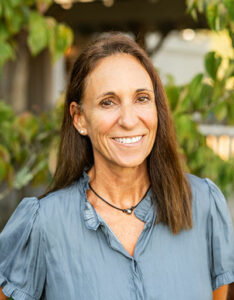
High Falls Lake, Glenville, North Carolina | Photo: Atira Conservation
Working Locally to Act Globally
By Nicole Adimey | Atira Conservation Founder
Did you know that world governments have agreed to conserve at least 30 percent of terrestrial, freshwater and marine  ecosystems? The agreement on this conservation target — often referred to as the “30×30 target” — was part of the Kunming-Montreal Global Biodiversity Framework made in 2022 based on current and projected biodiversity losses that threaten the survival of all of the Earth’s living beings — including humans.
ecosystems? The agreement on this conservation target — often referred to as the “30×30 target” — was part of the Kunming-Montreal Global Biodiversity Framework made in 2022 based on current and projected biodiversity losses that threaten the survival of all of the Earth’s living beings — including humans.
This biodiversity framework, adopted during the fifteenth meeting of the Conference of the Parties (COP 15), is designed to support achievement of the Sustainable Development Goals and builds on the Convention’s previous Strategic Plans. It created an ambitious pathway to reach the global vision of a world living in harmony with nature by 2050. Among the Framework’s key elements are four goals for 2050 and 23 targets for 2030.
While the U.S. was a member of the team that negotiated the framework, it is not an official signatory. But that doesn’t mean organizations and groups in the U.S. are not making significant contributions toward the overall world goal. In fact, local conservation groups have a huge role to play as the “boots-on-the-ground” actively working to protect locally and regionally important natural spaces.
Local land conservation groups — some 1,300 across the nation —have already protected 61,072,596 acres, according to the Land Trust Alliance. That’s roughly equivalent to 46 million football fields and more than the combined acreage of our national parks.
Today, while the national climate is shifting away from land conservation, it’s even more important for us to work together locally to ensure that we have places where we can:
- Enjoy and connect with nature;
- Ensure plants and animals have natural spaces they need to survive and thrive; and
- Support healthy communities and a healthy planet.
So how can you become part of the movement to support a healthy planet through land conservation? Here are a few simple ways:
- Join with your local conservation groups and volunteer for their stewardship activities! For a searchable database to find groups working in your area, click here.
- You can also advocate for policies in your local community by working with city and county governments to support or create policies that protect and conserve land.
- If appropriate for your land, consider donating it or working with a local trust to develop a conservation easement for your property. (Here’s a good starting point if you want to explore this idea.)
I’d also encourage you to sign up for the Land Trust Alliance’s newsletter, which provides news and updates on the land conservation front and can help keep you connected to conservation. And please don’t forget to follow us on Facebook and Instagram for the latest news of what we’re doing to conserve land in the U.S.!
Of course, you can always make a financial contribution to support land conservation. Donations to groups like Atira Conservation and local trusts help to pay for the due diligence necessary to complete land transactions and protect lands that matter!


High Falls Lake, Glenville, North Carolina | Photo: Atira Conservation
Please join us in conserving lands that matter!
Support Atira Conservation
Together, we can safeguard the irreplaceable, provide permanent connections between communities and nature and protect the Earth that we call call home!
(Tax ID#: 87-2103234)
